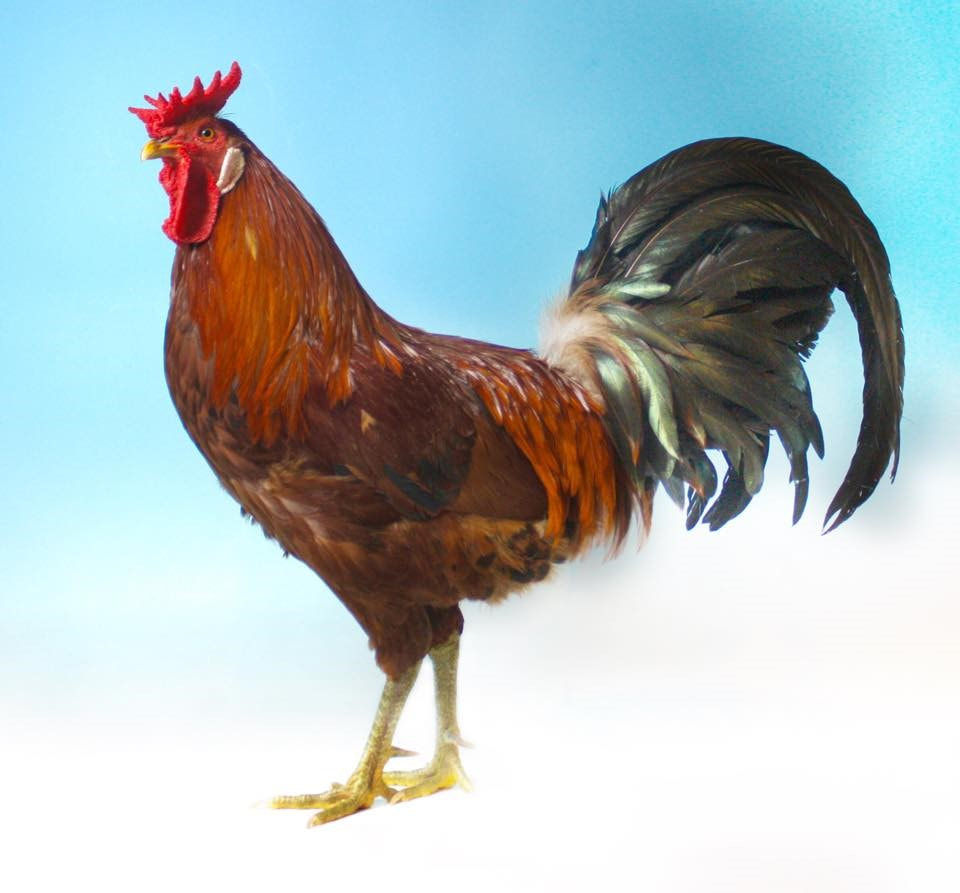The distinguishing feature of the breed is the cup-shaped comb. This comb variation has been known for centuries, birds with this type of comb are portrayed on paintings in galleries in Rome and Florence, dating back to the 16th century. The first specimens were taken to America from Sicily in the 1830s. Today’s stock probably descended from imports and subsequent selection by C. C. Loring of Dedham, Massachusetts in the 1860s or from eggs imported to America in 1892. In 1907 the breed was widely promoted by the efforts of Mrs. James L. Dumaresq, of Easton, Maryland, whose husband had been in the American diplomatic service. She noted "the chickens were pretty, tame, and abundant layers". Specimens were brought to Britain in 1910 and in 1913 by a Mrs. Colbeck of West Yorkshire. Soon afterwards a Breed Club was formed, there followed a brief spell of popularity followed by a decline in interest from the late 1920s. Sicilian Flowerbirds were standardised in 1922, as a distinct breed. The Buttercup in bantam form is a recent creation. Obtaining correct plumage markings on females, well-cupped combs on both sexes and a wholly red earlobe are the main difficulties in breeding show quality Buttercups. The American standard for the breed was changed in the late 1920s in favour of a white earlobe, hence stock imported to Britain in the 1970s from the USA were white lobed.
General characteristics: male
Carriage: Upright, bold and active.
Type: Body moderately long and deep, broad shoulders and narrow saddle. Full round breast. Broad back sloping downwards to the saddle, which rises in a slightly concave outline to the base of the tail. Long wings, closely tucked. Fairly large tail with long main feathers, carried at an angle of 45 degrees, and fitted with well-curved sickles and abundant coverts.
Head: Skull long and deep. Beak of medium length. Eyes full and keen. Comb beginning at the base of the beak with a single leader and joined to a cup-shaped crown, set firmly on the centre of the skull and surmounted with well-defined and regular points, of medium size and fine texture, and free from definite spikes in the cavity or centre. Earlobes almond-shaped, flat, smooth, and close fitting. Wattles thin and well rounded.
Neck: Rather long, with hackle flowing well over the shoulders.
Legs and feet: Of moderate size and length. Thighs well apart. Shanks slender and free of feathers. Toes, four, straight and well spread.
Female
With the exception of the comb (smaller and lower in proportion) the general characteristics are similar to those of the male, allowing for the natural sexual differences.
BANTAM
Sicilian Buttercup bantams should follow exactly the large fowl standard.
General characteristics: male
Carriage: Upright, bold and active.
Type: Body moderately long and deep, broad shoulders and narrow saddle. Full round breast. Broad back sloping downwards to the saddle, which rises in a slightly concave outline to the base of the tail. Long wings, closely tucked. Fairly large tail with long main feathers, carried at an angle of 45 degrees, and fitted with well-curved sickles and abundant coverts.
Head: Skull long and deep. Beak of medium length. Eyes full and keen. Comb beginning at the base of the beak with a single leader and joined to a cup-shaped crown, set firmly on the centre of the skull and surmounted with well-defined and regular points, of medium size and fine texture, and free from definite spikes in the cavity or centre. Earlobes almond-shaped, flat, smooth, and close fitting. Wattles thin and well rounded.
Neck: Rather long, with hackle flowing well over the shoulders.
Legs and feet: Of moderate size and length. Thighs well apart. Shanks slender and free of feathers. Toes, four, straight and well spread.
Female
With the exception of the comb (smaller and lower in proportion) the general characteristics are similar to those of the male, allowing for the natural sexual differences.
BANTAM
Sicilian Buttercup bantams should follow exactly the large fowl standard.
Please contact the breed registrar for more information - [email protected]


